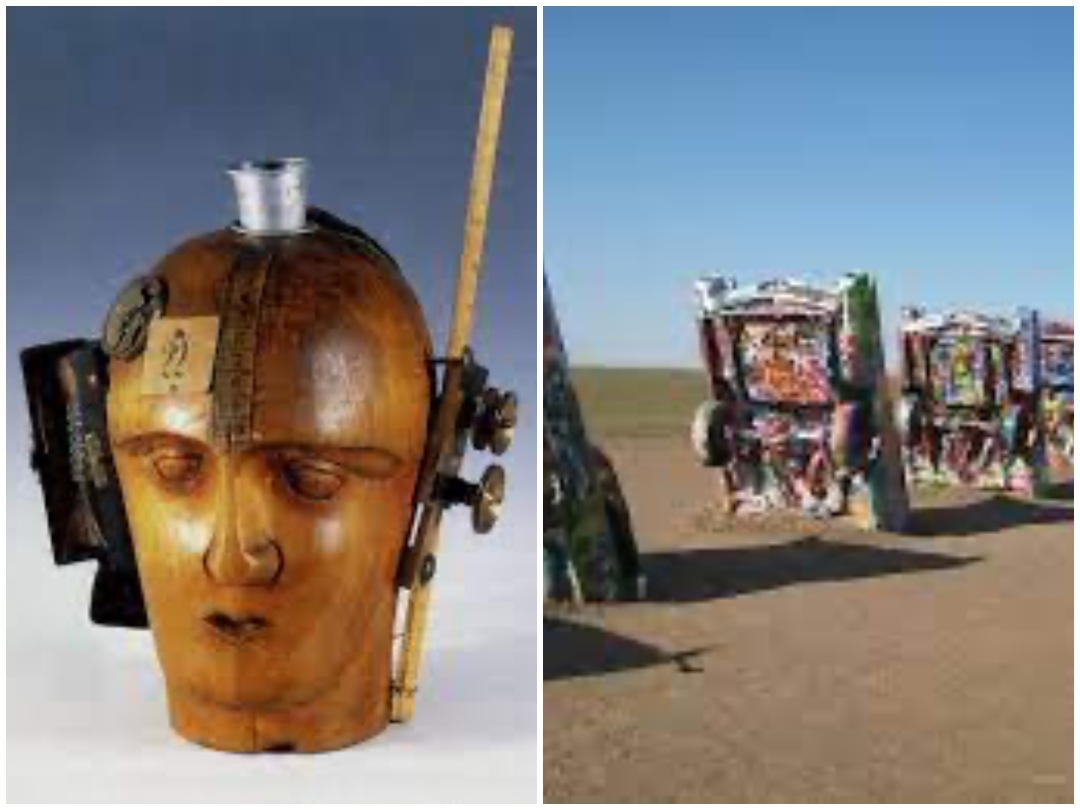Artworks often serve as reflections of the social and cultural contexts in which they are created. Raoul Hausmann‘s “The Mechanical Head (The Spirit of Our Time)” (1920) and Chip Lord, Hudson Marquez, and Doug Michels‘ “Cadillac Ranch” (1974) are two significant pieces of art that emerged from different periods of history. This comparative analysis aims to explore the similarities and differences between these artworks, delving into their respective historical contexts, artistic techniques, and underlying meanings.
“The Mechanical Head” was created during the Dada movement in post-World War I Europe, a time of disillusionment and fragmentation. Hausmann, a key figure in the Berlin Dada movement, sought to challenge conventional notions of art and society through his assemblage sculptures. On the other hand, “Cadillac Ranch” emerged during the Pop Art movement of the 1960s and 1970s in the United States. This movement celebrated consumer culture and embraced mass-produced imagery.
Hausmann’s “The Mechanical Head” is a montage constructed from disparate mechanical parts, including gears, wheels, and a camera lens. The artist combines these elements to create a grotesque human-like figure, representing the dehumanization of modern society. The artwork’s fragmented form reflects the shattered state of post-war Europe and critiques the mechanization of human life.
In contrast, “Cadillac Ranch” is a site-specific installation consisting of ten half-buried Cadillac cars arranged in a row in the Texas desert. The cars, all from different years, are positioned at various angles, partially submerged in the ground. This piece highlights the American obsession with automobiles and the transient nature of consumer culture. The artists incorporated the decaying vehicles into the landscape, blurring the line between art and nature.
“The Mechanical Head” by Hausmann conveys a sense of disillusionment and alienation in the face of rapid industrialization. The artwork critiques the dehumanizing effects of modern technology and the loss of individuality. By using machine parts to represent the human form, Hausmann emphasizes the mechanistic nature of society and its impact on personal identity.
“Cadillac Ranch” embodies the transient nature of American consumer culture and the relentless pursuit of novelty. The buried Cadillacs symbolize the fleeting nature of material possessions, as they gradually decay and become absorbed by the surrounding environment. The artwork challenges the notion of the automobile as a status symbol, inviting viewers to reflect on the impermanence of material desires.
“The Mechanical Head (The Spirit of Our Time)” by Raoul Hausmann and “Cadillac Ranch” by Chip Lord, Hudson Marquez, and Doug Michels offer profound insights into their respective historical periods and address societal issues of their time. Hausmann’s artwork critiques the mechanization of society and the loss of individuality, while “Cadillac Ranch” serves as a commentary on consumer culture and the transient nature of material possessions. Both artworks invite viewers to reflect on the impact of technological advancements on humanity and challenge conventional norms. Through their distinct artistic techniques and underlying meanings, these works continue to resonate with audiences, transcending the boundaries of time.
Discover more from The New Renaissance Mindset
Subscribe to get the latest posts sent to your email.

